|
Ever wonder why your yard is always muddy? Stepping in a yard that causes muddy shoes and wet socks is never fun. Muddy and messy yards can be caused by multiple things like improper grading, water-retaining soil, and multiple other problems. Another problem that can cause your lawn to retain more water than necessary is a clogged landscape drain. What Are Landscape Drain?Landscape drains go by many different names such as catch basins, area drain, or drainage basins. Landscape drains are helpful in areas that retain a lot of water. Landscape drains are the similar to floor drains such as shower drains. They usually look like a metal grate and they are usually located at low points in your landscape. The purpose of a drainage basin is to collect water. Landscape drains can take the water away from your lawn and make your yard less moist. How to Unclog a Landscape Drain:To clean out a landscape drain you must first retrieve all the tools that would be needed to complete the job. Tools you will need include things such as a screwdriver, a pair of gloves, a shop vacuum, and a garden hose. After that, you should make sure that there is no debris blocking the top of the drain. For the next step, you can remove as much debris with gloves as possible. If you cannot reach the rest of the debris, you can use a shop vacuum to suck out the rest of the debris. After you have cleaned out all that you can, you can wash the rest of the twigs, dirt, and build up out with a hose. Finally once you are done cleaning it, you can put it back on the cover, and you are done. Ways to Prevent Basins From Clogging In The Future:Make sure that you regularly clean out your gutters. Keeping your gutters clean will prevent extra leaves, branches, and dirt from clogging your drainage grates or drainage system. Additionally, you should remove any large plants or rocks surrounding the drain so that water may enter.
6 Comments
Prune and Mulch It is time for the final pruning of the year when your plants stop growing. This will not only keep the exterior of your home looking great for the next few months, it also keeps your home from getting mildew and fungus on it. By keeping a one to two foot gap between your home and your shrubs, you will help ensure proper airflow and keep the mildew and mold away. It is a great time to trim dead tree branches. You will allow more sunlight to warm your home and you remove the danger of those branches falling due to winter storms. Mulching after your final pruning will keep your landscape looking fresh for the winter and will conceal any leaves you "forgot" to pick up. It will also prevent splashing from rain hitting the soil which can cause diseases in plants. Clean Out Those Gutters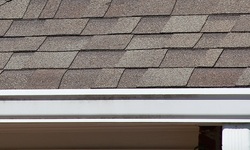 Lets be honest, most of us still have leaves in our gutters from last fall. The decomposing leaves in your gutters are home to insects, mold and mildew. They also hold water directly against your house causing wood rot and corrosion. Lets not forget that all the leaves stop the gutters from doing what they were installed to do in the first place. To remove the leaves from your gutters, you can get a sturdy ladder and a plastic scoop fashioned from an empty jug with a handle. If you have some non-slip boots and a roof that isn't very steep, you can use a leaf blower. Pressure Wash Your Home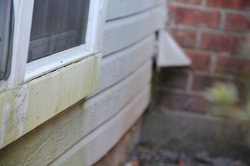 Cleaning your home with a pressure washer will not only have your home looking great for the winter, but also expose openings and chipping paint. Additionally, by removing the excess dirt and grime you will remove the places for algae and water to sit. Touch-up paintAfter pressure washing your home, you may have areas with cracked, chipped or peeled paint. It is a great time to scrape and sand those areas down and use some touch up paint to shore your home up for winter. Those areas are places where moisture will penetrate the wood and cause rot which will be a much more expensive and time consuming repair. Wrap pipes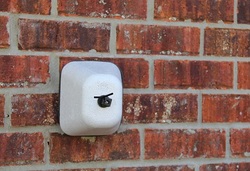 Wrap your pipes with an insulated wrap. Use insulated covering over all of your outdoor water outlet. This is one of the easiest things to do and can save you the biggest headache, as anyone who has had a cracked water pipe will tell you. If you have a raised house, be sure your exposed pipes under your house are also wrapped. Check your air conditioning ducts for tears or cracks also. Every year there seems to be a rush on these insulated coverings the first week freezing temperatures are expected, so beat the rush. Seal cracks and gaps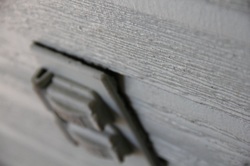 This is the big one. Really searching for and fixing these will save you a ton on your heating bill this winter. Be sure to check anywhere there is an opening in your home: doors, windows, attic pull down doors, garage doors, recessed lighting, and anywhere pipe first enters or exits your house. Weather stripping the bottom of your doors is a great place to start as a worn weather strip is a large area for heat to your home's interior. There is a fabric tent for your attic door that adds additional insulation to keep your home a steady temperature without having to run the heater unnecessarily. Insulate Your Attic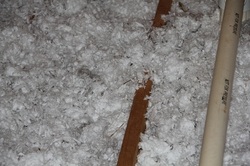 Check your attic's insulation. If you can see your rafters, you don't have enough insulation. Also, loose fill insulation, like the one shown, lose their insulating ability over time as they settle. If you haven't added insulation in your attic in a while, now is a great time to look into it. More information on insulating and weather proofing can be found on the Department of Energy's website. |
AuthorCharlie Casselberry Categories
All
Archives
April 2024
|
Contact |
Services |
About |
Locations
|
GreenSeasons
|
Baton Rouge Office
11628 S Choctaw Drive, Suite 227 Baton Rouge, Louisiana 70815 |
Greenwell Springs Office
14461 Frenchtown Road Greenwell Springs, LA 70739 |
Slidell Office
56010 Highway 433 Slidell, Louisiana 70461 |
© 2020 GreenSeasons

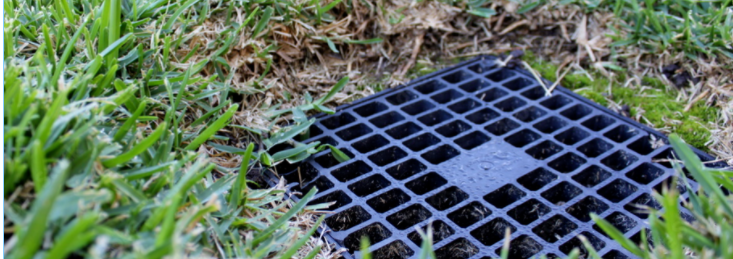


 RSS Feed
RSS Feed
